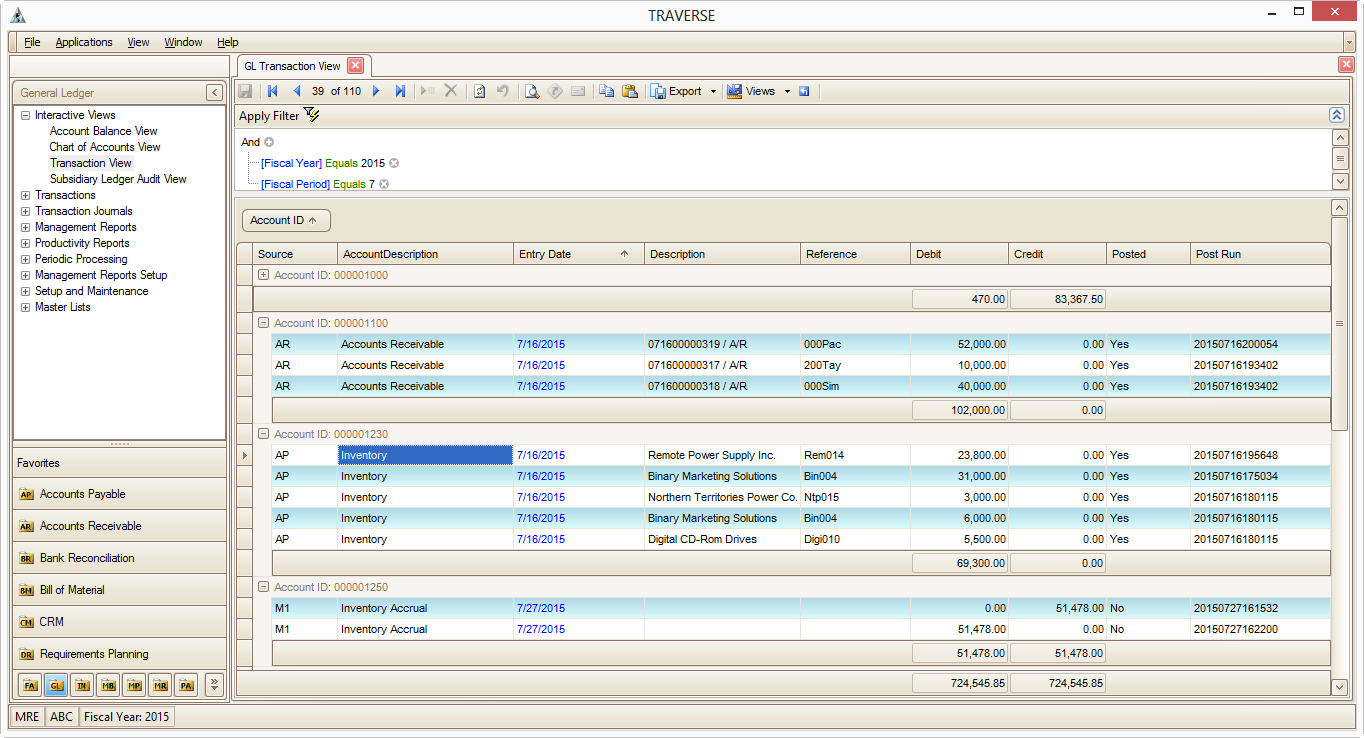The general ledger (GL) is a crucial piece of accounting software. It is commonly referred to as the “control center” of the accounting system, and it is the link between the various applications of computing and the accounting information system.
It is the application where the transactions are recorded and processed prior to the transaction being recorded in the books of record, such as the accounts payable and payroll journals.
A business’s accounting system is dependent upon the general ledger to provide control over the accounting information system. The general ledger is the only application that is run without a human interface. All of the interfaces, to the payroll system, production scheduling, accounts payable, and inventory, are automated interfaces to the general ledger.
Without the general ledger, those applications would not have their information entered into the accounting information system in a timely manner, and would be all too easy to bypass. A business’s accounting system is dependent upon the general ledger to provide control over the accounting information system.
The general ledger is the only application that is run without a human interface. All of the interfaces, to the payroll system, production scheduling, accounts payable, and inventory, are automated interfaces to the general ledger. Without the general ledger, those applications would not have their information entered into the accounting information system in a timely manner, and would be all too easy to bypass.
The general ledger is also involved in numerous other areas of a business besides accounting, such as sales and receivables, payroll and human resources, and accounts payable. However, this paper will concentrate on only the accounting aspects of the general ledger. This paper and those that follow provide an introduction to the general ledger, including what it is, how it operates, what it does, and how it is used. This paper provides a brief introduction to the accounting aspects of the general ledger.
What is the General Ledger?
The general ledger is the central application of the accounting information system. It is a summary of all the accounting information related to items such as customers, vendors, inventory, accounts receivable, receivables from other businesses, payables to other businesses, employees, and more. When manual systems are used, the general ledger is the master file that records all activity in the accounting information system.
As such, it must be maintained in a manner that provides the necessary level of control and integrity. As the central application, the general ledger is usually the largest application in terms of size and complexity. It controls the other systems, and must handle the processing load associated with the other applications in addition to the transaction processing load. It must perform all of this processing quickly and efficiently.
The central application of the accounting information system is a straightforward concept. The general ledger is the central application of the accounting information system. It is a summary of all the accounting information related to items such as customers, vendors, inventory, accounts receivable, receivables from other businesses, payables to other businesses, employees, and more. When manual systems are used, the general ledger is the master file that records all activity in the accounting information system.
As such, it must be maintained in a manner that provides the necessary level of control and integrity. As the central application, the general ledger is usually the largest application in terms of size and complexity. It controls the other systems, and must handle the processing load associated with the other applications in addition to the transaction processing load. It must perform all of this processing quickly and efficiently.
The central application of the accounting information system is a straightforward concept. The general ledger is the central application of the accounting information system. It is a summary of all the accounting information related to items such as customers, vendors, inventory, accounts receivable, receivables from other businesses, payables to other businesses, employees, and more. When manual systems are used, the general ledger is the master file that records all activity in the accounting information system. As such, it must be maintained in a manner that provides the necessary level of control and integrity. As the central application, the general ledger is usually the largest application in terms of size and complexity. It controls the other systems, and must handle the processing load associated with the other applications in addition to the transaction processing load.
In addition to being a central application, the general ledger is made up of two sections. The general ledger is made up of the ledger and the subledger. The ledger is the primary section of the general ledger. It is the center of the general ledger and is responsible for holding the balance of the accounting information system.
Each account is related to a ledger account number, which is the general ledger master record. Much of the information about an account is stored within the ledger account number. The subledger is a secondary section of the general ledger. The subledger contains audit trails for the ledgers accounts. An audit trail is a list of all transactions that affected an account. The subledger basically is a trail that keeps all the information together for the financial statements. The accounting information system determines which accounts need to have the general ledger controls, and which accounts will have the detailed information stored in the subledger.











